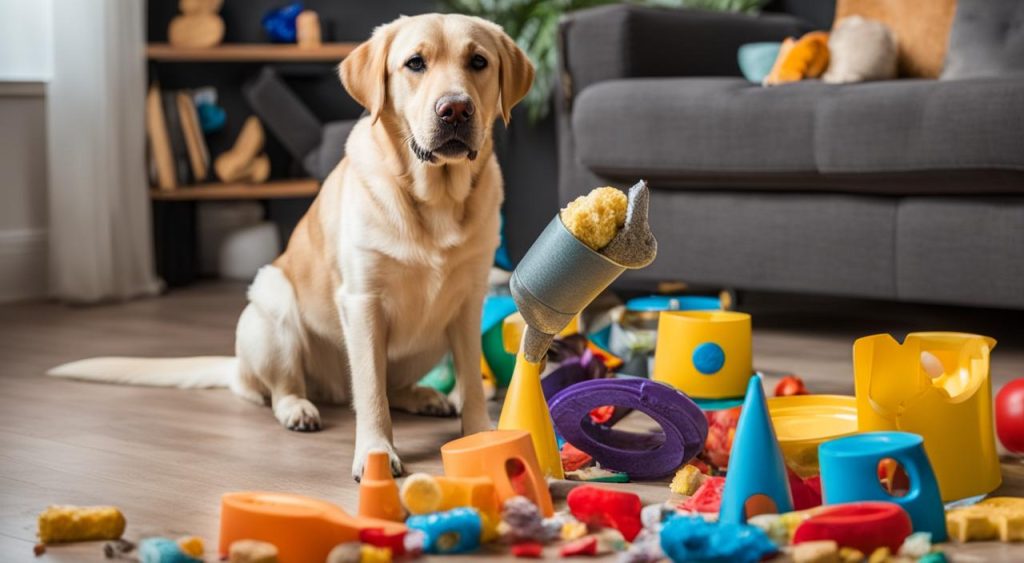Labs, specifically Labrador Retrievers, are known for shedding a lot due to their double-layered coats. They shed the most during two seasons – spring and fall – when there are drastic weather changes. Labs also shed throughout the year, requiring regular grooming to manage the shedding. Shedding is a natural process that helps keep the skin healthy and regulate body temperature. Labradors are prone to shedding more than other breeds due to their unique double coat, which consists of an undercoat and a topcoat. Labradors shed heavily during the spring and fall seasons to transition between their winter and summer coats. It is important to note that shedding can also be influenced by factors such as diet, stress, health issues, and seasonal changes.
Why Do Labs Shed and Is It a Health Issue?
Shedding in dogs, including Labradors, is a natural phenomenon and a sign of a healthy coat and skin. Shedding helps to get rid of old or damaged hair and maintain a healthy and clean skin. However, excessive shedding can be a sign of underlying health issues or imbalances. Various factors can contribute to excessive shedding in Labradors, such as an imbalanced diet, using the wrong shampoo, stress, skin parasites, hormone imbalance, and underlying diseases. If a Labrador is shedding excessively or shows changes in behavior, it is important to consult a veterinarian to determine the cause and appropriate treatment.
How Much Do Labs Shed and When?
Labrador Retrievers shed a lot throughout the year, with the most significant shedding occurring during the spring and fall seasons. In the spring, Labradors shed their thick winter coat to prepare for the summer, while in the fall, they shed their summer coat and grow a thicker coat for the winter. Shedding can be more prevalent during these seasonal transitions. Labradors have a unique double coat that helps them adapt to various weather conditions, and the shedding of their undercoat is a natural part of this adaptation process. Regular grooming and brushing can help manage the amount of shedding and keep the Labrador’s coat healthy.
Tips to Manage Labrador Shedding
Although it is not possible to completely eliminate shedding in Labradors, there are several measures that can be taken to manage and reduce shedding. Here are some tips:
- Brush your Labrador regularly to remove loose hair and help distribute natural oils.
- Use deshedding tools, such as a slicker brush or shedding blade, to help remove loose hair from the undercoat.
- Bathe your Labrador with a mild shampoo formulated for dogs, avoiding over-bathing as it can strip the coat of natural oils.
- Ensure your Labrador has a balanced diet with high-quality protein and essential fatty acids to support coat health.
- Consider adding supplements, such as omega-3 fatty acids, to your Labrador’s diet to promote healthy skin and coat.
- Manage stress levels in your Labrador by providing regular exercise, mental stimulation, and a calm and comfortable environment.
- Regularly check your Labrador for skin parasites, such as fleas or mites, and consult a veterinarian for appropriate treatment if necessary.
Key Takeaways:
- Labrador Retrievers shed a lot due to their double-layered coats and shed the most during spring and fall seasons.
- Excessive shedding in Labradors can be a sign of underlying health issues or imbalances.
- Regular grooming and brushing can help manage Labrador shedding.
- Using deshedding tools and a balanced diet can also help reduce shedding in Labradors.
- Consult a veterinarian if your Labrador sheds excessively or shows changes in behavior.
Why Do Labs Shed and Is It a Health Issue?
Shedding is a natural phenomenon in dogs, including Labradors, and serves as a sign of a healthy coat and skin. It plays a vital role in getting rid of old or damaged hair and maintaining healthy, clean skin. However, excessive shedding in Labradors can sometimes indicate underlying health issues or imbalances.
There are various factors that can contribute to excessive shedding in Labradors. An imbalanced diet can lead to inadequate nutrition, resulting in hair loss and increased shedding. Using the wrong shampoo or grooming products can also cause irritation and excessive shedding. Labradors experiencing stress, whether it be from changes in their environment or emotional factors, may exhibit increased shedding as well.
Other potential causes of excessive shedding in Labradors include skin parasites, such as fleas or ticks, which can result in skin irritation and hair loss. Hormone imbalances, such as an overproduction or underproduction of certain hormones, can disrupt the normal hair growth cycle and lead to excessive shedding. Additionally, underlying diseases or conditions, such as allergies or thyroid disorders, can manifest as increased shedding in Labradors.
If your Labrador is shedding excessively or displaying changes in behavior along with the excessive shedding, it is important to consult a veterinarian. They can perform a thorough examination, run tests if necessary, and determine the underlying cause of the shedding. Proper diagnosis and treatment are crucial in addressing any potential health issues or imbalances and helping your Labrador maintain a healthy coat and overall well-being.
How Much Do Labs Shed and When?
Labrador Retrievers are known to shed a lot throughout the year, but shedding frequency and amount may vary. The most significant shedding occurs during the spring and fall seasons when Labradors transition between their winter and summer coats.
In the spring, Labradors shed their thick winter coat to prepare for the warmer summer months. This shedding helps them adapt to the rising temperatures and avoid overheating. During this time, you may notice a higher amount of shedding as the old hair is replaced with a lighter summer coat.
Similarly, in the fall, Labradors shed their summer coat to make way for a thicker coat that will keep them warm during the winter. This shedding process allows Labradors to adjust to colder weather and ensures proper insulation.
Labradors have a double coat consisting of an outer coat (topcoat) and an insulating undercoat. The undercoat is responsible for the majority of shedding. It helps regulate the Labrador’s body temperature and protects them from harsh weather conditions. Shedding the undercoat is a natural process that Labradors undergo to maintain a healthy coat and skin.
To manage Labrador shedding, regular grooming and brushing are essential. Brushing your Labrador’s coat at least once or twice a week can help remove loose hair and prevent it from ending up all over your home. It also promotes healthy skin and coat by distributing natural oils and reducing the risk of matting or tangling.
During shedding seasons, you may consider using specialized deshedding tools, such as slicker brushes or shedding blades, to help remove excess hair more effectively. These tools can reach the Labrador’s undercoat and minimize shedding.
While shedding cannot be completely eliminated, proper grooming and regular brushing can help reduce the amount of hair in your home and keep your Labrador’s coat healthy and shiny.
Tips to Manage Labrador Shedding
Labradors are notorious for their shedding, but there are steps you can take to manage and reduce it. By following these grooming tips and using the right tools, you can keep your Labrador’s shedding under control.
Regular Grooming: Brush your Labrador’s coat regularly to remove loose hairs and prevent them from spreading around your home. Use a deshedding tool specifically designed for Labradors to effectively remove the loose undercoat.
Bathing Frequency: Bathe your Labrador regularly, but not excessively, as frequent bathing can strip their coat of natural oils. Use a gentle shampoo formulated for dogs to keep the coat clean and healthy. Consult with your veterinarian for the appropriate bath frequency for your Labrador.
Diet and Nutrition: Provide your Labrador with a balanced diet that promotes a healthy coat. Opt for high-quality dog food that contains essential nutrients for skin and coat health. Omega-3 fatty acids found in fish oil supplements can also help reduce shedding.
Supplements: Speak to your veterinarian about recommended supplements that can support your Labrador’s coat health and reduce shedding. Supplements containing omega-3 fatty acids, biotin, and other essential nutrients can promote a healthy coat and reduce excessive shedding.
By implementing these Labrador shedding management techniques, you can minimize the amount of hair in your home and ensure that your Labrador’s coat stays healthy and beautiful. Remember that shedding is a natural process for Labradors, so it’s important to manage it rather than trying to eliminate it completely.





